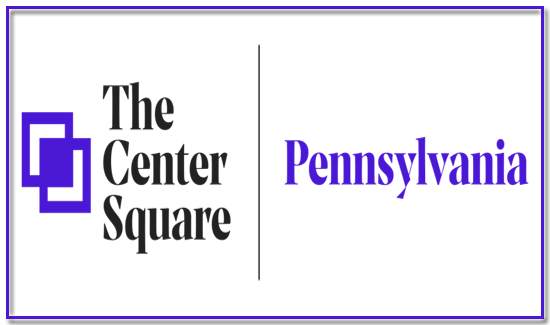Is RAD Tax Revenue Headed for Record Breaking Year?
![]()
(October 27, 2021)–Summary: Allegheny County levies a 1 percent local option sales tax with half the revenue allocated to the Regional Asset District (RAD) and half to the county and its municipalities. The tax is levied on the same in-county purchases as the state’s 6 percent sales, use and hotel occupancy tax. County resident purchases such as cars or boats in other counties are also subject to the tax. In its 2022 preliminary budget published on Sept. 30, RAD is projecting that 2021 collections will total $109.4 million.
_________________________________________________________________
RAD’s portion of the sales tax revenue is used to distribute grants to various entities designated as regional assets, including libraries, parks, the zoo and the aviary. It is also used to service bonds for the construction of Heinz Field, PNC Park and the David L. Lawrence Convention Center. And $3 million a year is allocated to the Port Authority (PAAC).
Sales tax data is reported with a two-month lag so that reported October 2021 tax revenue reflects August 2021 sales. Each reference to a month in this Brief will be to the month revenue was reported. Bear in mind that pandemic effects have made year-over-year comparisons more complicated.
Sales tax revenue through October 2021 is $93.9 million. There have been eight months this year where revenue exceeded the same month in 2019 and eight months where revenue exceeded the same month in 2020. The cumulative collections through October 2021 exceed cumulative collections for the previous two years in that same time frame.
Based on data from the Pennsylvania Tax Compendium on remittances of sales tax by type statewide, in the last 10 fiscal years of total collections, non-motor vehicle sales taxes were 87 percent and motor vehicle sales taxes were 13 percent. If Allegheny County sales activity is similar, then collections through October would be around $82 million from non-motor vehicle sales and $12 million from motor vehicle sales.
RAD Sales Tax Revenue, 2019 through 2021 ($000s)
| Month | 2019 | 2020 | 2021 |
| January | 8,402 | 7,831 | 9,279 |
| February | 9,987 | 8,285 | 9,277 |
| March | 8,174 | 10,446 | 7,965 |
| April | 7,348 | 8,056 | 7,862 |
| May | 9,298 | 7,179 | 10,027 |
| June | 8,787 | 5,848 | 9,572 |
| July | 8,839 | 7,715 | 9,830 |
| August | 9,534 | 10,190 | 10,628 |
| September | 8,960 | 8,704 | 9,866 |
| October | 8,724 | 8,528 | 9,578 |
| Jan-Oct | 88,053 | 82,782 | 93,884 |
| Annual | 105,967 | 100,240 | 109,399 (projected) |
If the preliminary budget’s sales tax projection proves to be accurate, that would be a 9 percent increase in collections over the 2020 pandemic year but only 3.2 percent above the 2019 total. Historically, the largest year-over-year rise in sales tax revenue occurred from 1995 to 1996 when collections jumped from $52.8 million to $59.8 million (13.4 percent).
But the growth might be short-lived. The preliminary budget presented to the RAD board on Sept. 30 has 2022 sales tax revenue budgeted at $107 million. The document notes that this decrease from the 2021 projection “is attributed to consumer spending uncertainties as individual economic impact payments expire, as well as a slowdown of motor vehicles sales due to notable trends that include supply chain challenges and extended teleworking.” Inflation could also have an impact.
The 2022 preliminary budget calls for expenditures of $110.8 million. It includes operating and capital grants for assets, Sports and Exhibition Authority (SEA) debt service and administration. It is significantly higher than the final budget for 2021 ($101.5 million, approved in Dec. 2020). The budget for 2020 ($109.5 million, approved in Nov. 2019 prior to the pandemic) was amended ($97.2 million, approved in Sept. 2020) to account for the decreasing sales tax revenues as a result of the shutdown and curtailed activity.
How are assets that were funded in 2020 affected in the 2022 preliminary budget? Of the nine contractual assets (including libraries, parks, the zoo and the aviary), the operating and capital grants proposed for next year total $82.7 million. This is higher than the $74.2 million for 2021 and the $70.7 million in the 2020 amended budget but only slightly higher than the $79.5 million in grants originally adopted for 2020.
The SEA debt service payment has remained unchanged at $13.4 million through the pandemic. Of the 97 annual assets that were granted funding in 2020, nine do not appear in the 2022 preliminary budget. There are five new prospective grantees and this group as a whole is budgeted to receive $13.2 million in 2022. In the 2020 final budget, the annual grant total was $15.2 million.
We have written about PAAC and SEA in recent years as they were added to the list of RAD annual recipients. Grant reductions of 5 percent this year are to be restored in 2022.
PAAC is proposed to receive $3 million as part of the local match for state subsidies. The SEA is proposed to receive $800,000 for its multi-facility capital fund for repairs at the stadiums, convention center and PPG Paints Arena.
We have argued against RAD granting money to these authorities due to the existing county matches for mass transit as well as the ability for sports teams to handle repairs at the facilities.
PAAC receives a local match from Allegheny County’s alcoholic beverage and car rental taxes and has been granted over $500 million in federal coronavirus dollars since March 2020. When PAAC made its initial RAD funding request in September 2012, there was talk of “develop[ing] a long-term agreement that provides RAD funding to Port Authority for as many as 10 years.” Instead, PAAC was granted $3 million for 2013 and has returned each year with an annual application. Aside from 2021, PAAC received $3 million annually. With 2022 marking a 10th year of funding and the possibility of a new state public transportation funding arrangement that relies less on the Turnpike, that should be the opportunity to move PAAC off the RAD budget.
Eric Montarti, Research Director
If you wish to support our efforts please consider becoming a donor to the Allegheny Institute.The Allegheny Institute is a 501(c)(3) non-profit organization and all contributions are tax deductible.Please mail your contribution to:
The Allegheny Institute
305 Mt. Lebanon Boulevard
Suite 208
Pittsburgh, PA15234






